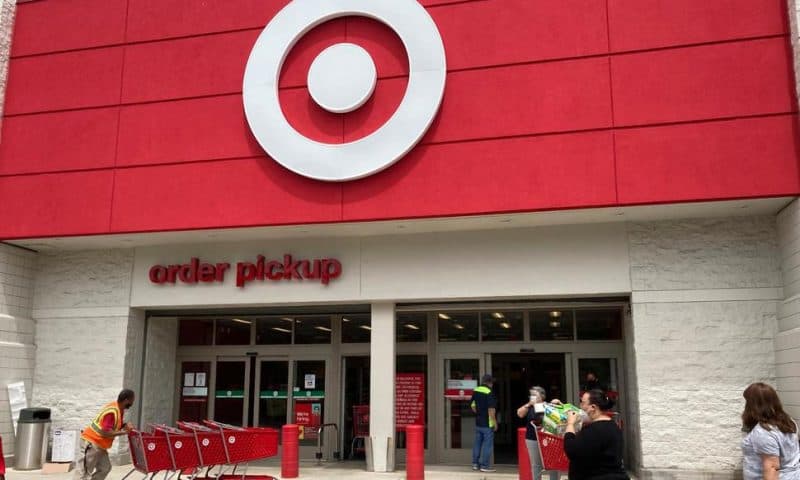Target’s streak of strong results extended into its latest quarter but its skyrocketing online sales growth has come back to earth.
NEW YORK — Target’s streak of strong results extended into its latest quarter but its skyrocketing online sales growth has come back to earth.
The Minneapolis retailer reported Wednesday that sales at its stores that have been open for at least a year rose 8.7% in the three-month period that ended July 31. That was on top of a 10.9% growth in the same 2020 span.
And like Walmart, Target saw a slowdown from last year’s blistering online sales growth as more shoppers came out of their pandemic-forced isolation.
Target’s online sales rose 10% its fiscal second quarter, compared to a 195% surge in the year-ago period. It was also a slowdown from the first three months of the year, when online sales soared 50% from a year ago.
The company said Wednesday that it expects high single-digit percentage growth in comparable sales, near the high end of its previous guidance range.
Major retailers are putting up quarterly earnings numbers this week and at Target, like Walmart and Home Depot before it, there is data that points to a near normalcy for American shoppers. At this point last year, millions were stocking up on food and preparing for a long stay at home. This year, the same crowd has at least partially emerged from hibernation, buying clothes, eating out and traveling.
The same trends are playing out at Home Depot and Lowe’s, which also reported earnings this week. Sales are still strong, but the do-it-yourself craze that began with homeowners at the start of the pandemic has cooled. Lowe’s on Wednesday projected annual revenue above Wall Street estimates in the midst of a hot housing market.
But there are constrictions even among professional builders.
Home construction fell a sharp 7% in July as homebuilders struggled to cope with a variety of headwinds, the Commerce Department reported Wednesday. It was the slowest pace since April, but still 2.5% higher than a year ago.
And retailers are wary in the recovery as the delta variant of COVID-19 surges across the U.S. and mask mandates are reinstated. They’re also grappling with higher prices just as the temporary government stimulus and other benefits, which helped energize spending, are fading. Snarled supply chains continue to be an issue.
So far, nothing appears to be slowing spending.
Lowe’s CEO Marvin Ellison said Wednesday that the stores haven’t seen any material impact in areas with big spikes in cases of the delta variant.
Target CEO Brian Cornell told reporters that he continues to see a “very optimistic guest.”
“We have a very resilient consumer, “said Cornell. “We are not seeing any adjustment in consumer behavior.”
Target said that it earned $1.82 billion, or $3.65 per share, in its fiscal second quarter. That compares with $1.69 billion, or $3.35 in the year-ago period. Its adjusted earnings per share were $3.64. Revenue rose 9.4% to $24.83 billion.
Analysts were expecting adjusted earnings of $3.51 per share on revenue of $24.99 billion, according to FactSet.
Target’s online sales growth was driven by same-day services like order pickup and drive up. Such services were up 55% in the latest quarter, but down from 270% growth last year. More than 95% of Target’s second-quarter sales were fulfilled by its stores.
Sales grew across all five major product categories tracked by Target, led by clothing, whose sales saw a double digit percentage growth.
Cornell told reporters that many of the traditional back-to-school items like backpacks, lunch boxes and school uniforms are selling well. Earlier this month, Target launched the first mini Ulta Beauty shops. The shops are about 1,000 square feet and carry makeup, skincare, and fragrance, operate beside existing beauty sections in Target stores.
Shares slipped more than 3%, or $8.18 per share, to $246.71 in morning trading Wednesday.

